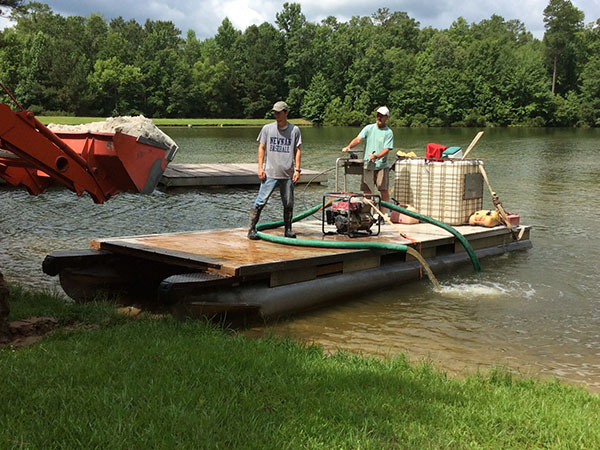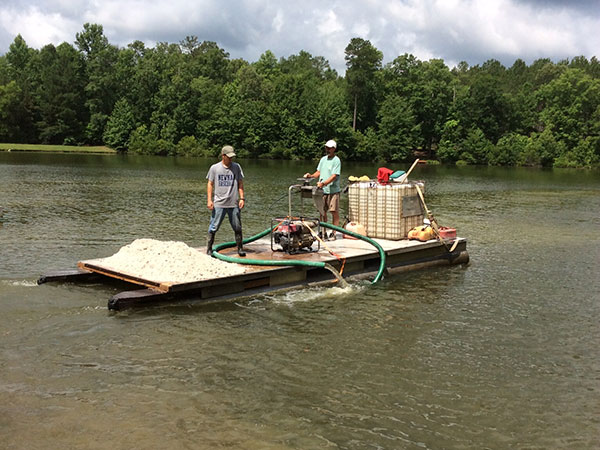- Details

The addition of lime increases fish production in soft (low total hardness) waters. Many ponds in the southeastern United States have very soft water and will not develop satisfactory plankton blooms unless lime is periodically added. Agricultural (dolomitic) lime is the best choice for sport fishing ponds. Check ponds for lime deficiency every three to five years.

Lime has several desirable effects on water quality. Addition of lime stabilizes the pH of bottom mud and increases the availability of phosphorus. It increases the production of aquatic insects in mud, providing more food for small fishes. Liming increases the availability of carbon dioxide for photosynthesis. The overall effect of liming is to increases phytoplankton production which results in increased fish production.
Many ponds in Georgia have very soft water, with a total hardness less than 10ppm (parts per million). Often, these ponds must be limed before a satisfactory bloom will develop. In ponds with a total hardness over 20 ppm, adding lime may have little effect on fish production.

